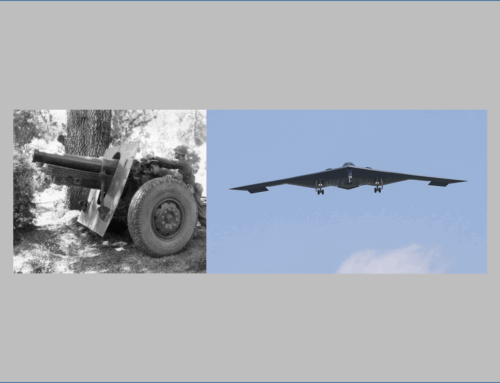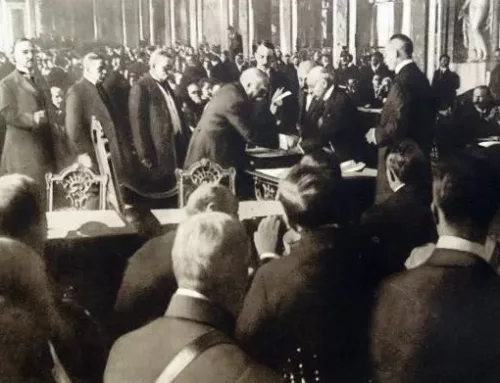Sailors in Olive Drab
Published: 15 April 2023
By James P. Gregory, Jr.
via the Naval History Magazine web site

Naval Hospital Corpsmen at the sick bay of the regimental aid station behind the front lines near the Verdun Sector, April 1918.
During the final year of World War I, enlisted U.S. Navy medical personnel performed great acts of heroism amid the killing fields of the Western Front.
In World War I, many U.S. Navy corpsmen served alongside the Marine Corps providing medical care to combat casualties. Their undaunting courage saved the lives of many men and earned Navy corpsmen 460 major awards and citations, including two Medals of Honor, 55 Navy Crosses, 31 Distinguished Service Medals, 2 U.S. Army Distinguished Service Medals, and 27 letters of commendation, as well almost as many French decorations of the Croix de Guerre.1 Attached to the 5th Marines and 6th Marines of the 4th Brigade, 2nd Division, American Expeditionary Forces, the Navy Corpsmen served alongside Marines in an Army Division placed mostly under French control. Therefore, many of them received medals from different branches of the military. Unfortunately, their contributions find only small reference in the many books written about the Marine Corps in World War I.2 By focusing on the heroic deeds of Navy corpsmen from each of the 2nd Division’s six major engagements, the legacy of their sacrifice is revealed.
Verdun
In the early morning of 13 April 1918, the 6th Marines received their first heavy losses of the war. The 74th Company, 6th Marines slept in reserve at Camp Fontaine St. Robert, mostly in barracks in a wooded ravine. Suddenly, a heavy barrage made of mostly gas inundated the area, catching the Marines in their billets before they had a chance to escape.3 A shell struck the roof of the barracks, and the concentrated fumes filled the building before the men were able to get their gas masks on. The wind quickly spread the gas to all parts of the ravine.

Carl Kingsbury (New Castle High School Yearbook, 1915)

Fred Schaffner (Courtesy of Kevin Seldon)
All officers were evacuated in serious condition, and about 220 men were burned or had inhaled the gas. Forty of them died as a result.4 Two hospital corpsmen, 18-year-old Pharmacist’s Mate Third Class Fred C. Schaffner of Kewanee, Illinois, and 22-year-old Hospital Apprentice First Class Carl O. Kingsbury of Pittsburgh, Pennsylvania, worked for hours over their comrades to relieve their pain and save their lives. With no concern for their own personal safety, both corpsmen treated more than 100 cases of gas casualties without a gas mask. The two men spent several hours aiding the wounded.
Schaffner and Kingsbury suffered from exposure to the gas through breathing and touching the wounded as it had seeped into their uniforms. When visible symptoms of gas poisoning appeared, both men were ordered to the rear despite their protests. They collapsed soon afterward.5 Schaffner inhaled so much gas that he died 48 hours later. Kingsbury was evacuated and spent the next three and half months in the hospital, one month of which he was totally blind.
Both men were awarded the Army Distinguished Service Cross and received a Special Letter of Commendation becoming the first Naval Personnel to receive the D.S.C. in World War I.6 After recovering from his wounds, Kingsbury became an orderly to General James G. Harbord until July 1919, when he became a staff orderly for the Commander-in-Chief of the American Expeditionary Forces, General John J. Pershing. He was discharged from the service on 27 September 1919. In Rock Island, Illinois, the American Legion honored Schaffner’s memory by establishing the Fred C. Schaffner Post in 1919.7
Belleau Wood
After their time in the Verdun Sector, the Marines rested for a short time until 30 May. The 2nd Division received orders to relieve the 1st Division at Cantigny. However, the next day, orders were changed to relieve the French army at Chateau-Thierry. The Marines then boarded French trucks and rushed to halt the German offensive that had demolished the French and British lines, creating a bulge in the Allied line.
On 1 June, the Marines dug in along the Paris-Metz Highway. The next day, an artillery barrage announced the attack as the Germans came swarming through the wheat fields. The Germans, confident in victory, charged the field in mass formation but did not break the American lines. Instead, they retreated and dug into Belleau Wood. For the next three days, the Marines waited for another attack that never came.
Read the entire article on the Naval History Magazine web site.
External Web Site Notice: This page contains information directly presented from an external source. The terms and conditions of this page may not be the same as those of this website. Click here to read the full disclaimer notice for external web sites. Thank you.



